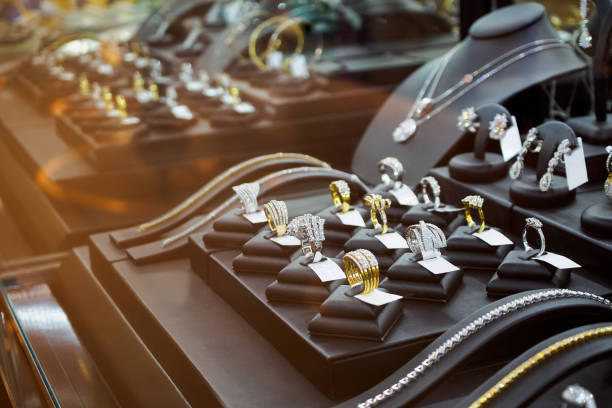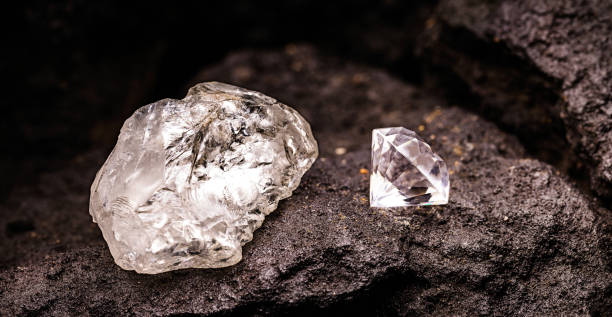Jewelry has been an essential part of human culture for centuries, symbolizing wealth, status, love, and artistry. From ancient civilizations to modern fashion, precious jewelry continues to captivate people worldwide. Whether made from gold, silver, platinum, or adorned with gemstones, each piece holds unique value and significance. This article explores the different types of precious jewelry, their materials, and their cultural importance.
1. Gold Jewelry
Gold is one of the most sought-after metals in jewelry-making due to its lustrous appearance, durability, and rarity. It has been used for thousands of years in various forms, from simple rings to elaborate crowns.
Types of Gold Jewelry:
Yellow Gold: The classic form of gold, often alloyed with copper and zinc for strength.
White Gold: Created by mixing gold with palladium or nickel and coated with rhodium for a silvery shine.
Rose Gold: A romantic blend of gold and copper, giving it a pinkish hue.
Solid Gold vs. Gold-Plated: Solid gold is more valuable, while gold-plated jewelry has a thin layer of gold over a base metal.
Gold jewelry is popular for rings, necklaces, bracelets, and earrings, often paired with diamonds or other gemstones.
2. Silver Jewelry
Silver is another precious metal widely used in jewelry. It is more affordable than gold but still holds significant value. Sterling silver, an alloy of 92.5% silver and 7.5% copper, is the most common type used in jewelry-making.
Popular Silver Jewelry Pieces:
Silver Rings: Often engraved or set with gemstones like turquoise or onyx.
Silver Chains and Pendants: Versatile and timeless, suitable for both casual and formal wear.
Silver Bangles and Cuff Bracelets: Popular in bohemian and traditional designs.
Silver requires regular polishing to prevent tarnishing but remains a favorite for its sleek, elegant appearance.
3. Platinum Jewelry
Platinum is one of the rarest and most durable precious metals, making it highly valuable. Its natural white sheen does not fade, making it ideal for high-end jewelry.
Why Choose Platinum?
Hypoallergenic: Perfect for those with sensitive skin.
Density: Heavier than gold, giving it a luxurious feel.
Timeless Elegance: Often used in engagement rings and wedding bands.
Platinum jewelry is commonly set with diamonds, sapphires, or other precious stones.
4. Diamond Jewelry
Diamonds are the most coveted gemstones, known for their brilliance, hardness, and symbolism of eternal love.
Types of Diamond Jewelry:
Diamond Rings: Engagement rings, eternity bands, and statement rings.
Diamond Necklaces: Solitaire pendants, tennis necklaces, and chokers.
Diamond Earrings: Studs, hoops, and drop earrings.
The 4 Cs (Cut, Clarity, Color, Carat) determine a diamond’s value.
5. Pearl Jewelry
Pearls are organic gemstones formed within mollusks, valued for their natural beauty and elegance.
Varieties of Pearls:
Natural Pearls: Extremely rare and expensive.
Cultured Pearls: Grown with human intervention (e.g., Akoya, Tahitian, South Sea pearls).
Freshwater Pearls: More affordable and versatile.
Pearl necklaces, earrings, and bracelets are timeless classics, often worn at weddings and formal events.
6. Gemstone Jewelry
Beyond diamonds, many precious and semi-precious gemstones are used in jewelry.
Popular Gemstones & Their Meanings:
Ruby (Red): Symbolizes passion and courage.
Sapphire (Blue): Represents wisdom and royalty.
Emerald (Green): Associated with rebirth and love.
Amethyst (Purple): Believed to bring calmness.
Gemstones are used in rings, pendants, and statement pieces, often customized for birthstones or astrological significance.
7. Costume & Fashion Jewelry
While not made from precious materials, costume jewelry plays a significant role in fashion. Made from base metals, acrylic, or glass, these pieces are affordable yet stylish.
Examples:
Statement Necklaces: Bold designs for special occasions.
Costume Earrings: Lightweight and trendy.
Beaded Bracelets: Popular in bohemian styles.
Though not as valuable as fine jewelry, costume jewelry allows for creative expression.
8. Antique & Vintage Jewelry
Antique (over 100 years old) and vintage (20-100 years old) jewelry holds historical and sentimental value.
Characteristics:
Art Deco (1920s-1930s): Geometric designs.
Victorian Era (1837-1901): Romantic and intricate.
Retro (1940s-1950s): Bold and colorful.
Collectors seek these pieces for their craftsmanship and rarity.
9. Custom & Handmade Jewelry
Custom-made jewelry allows for personalization, from engraved names to unique gemstone combinations. Artisans craft these pieces by hand, ensuring exclusivity.
10. Cultural & Religious Jewelry
Many cultures incorporate jewelry into traditions:
Mangalsutra (India): A black-beaded necklace symbolizing marriage.
Cross Pendants (Christianity): A sign of faith.
Hamsa Hand (Middle East): Believed to ward off evil.
These pieces carry deep spiritual meanings.


